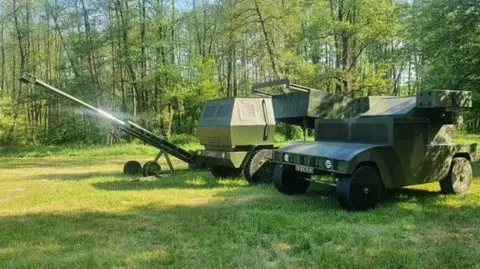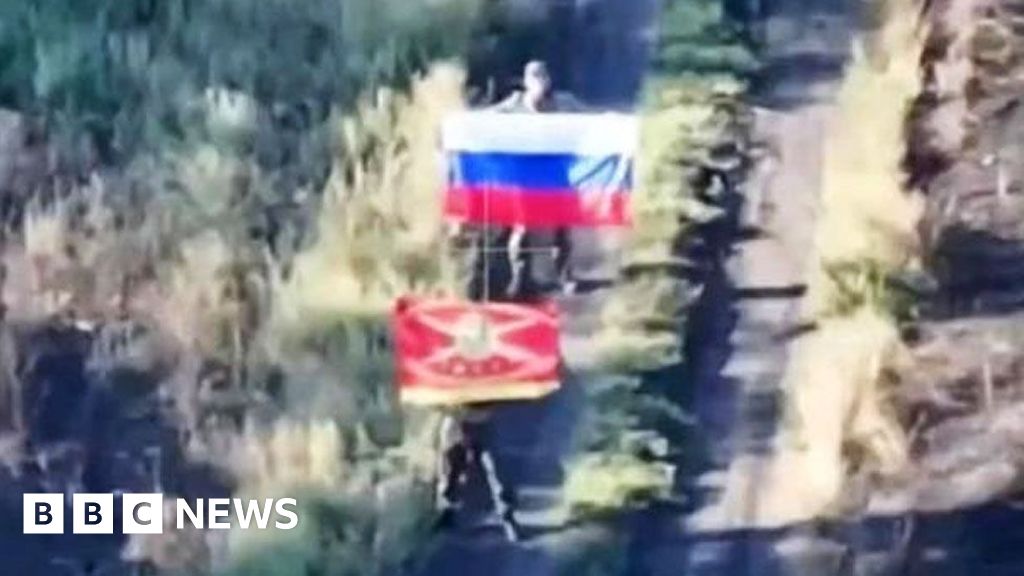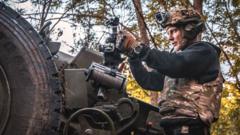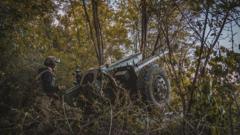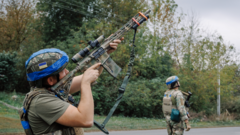In a marked escalation of its summer offensive, Russia is making significant territorial advances in eastern Ukraine, specifically around Kostyantynivka and the Sumy region. This aggressive campaign, initiated in May, has seen Russian forces adopt a strategy focused on small, agile units, enabling them to probe defenses and launch attacks more effectively. The results are evident; Russia reportedly captured about 173 square miles in less than a month—more than double its previous month's gains, according to insights from DeepState, a Ukraine-based organization utilizing combat footage to track the conflict's progress.
Both military factions have turned to unconventional means of traversing the battlefield, notably employing motorcycles and civilian cars for quick maneuverability across open terrains. The Ukrainian forces, heavily reliant on their drone capabilities for defense, are using these civilian vehicles to bolster their supply lines. In contrast, the Russian military has adapted these vehicles for offensive operations. Colonel Viktor Kevliuk, a Ukrainian Army reservist and a defense analyst, likens the situation to a “renaissance of the cavalry,” emphasizing the modern approach to combat mobility afforded by engine-powered vehicles.
The fighting around Sumy illustrates these tactics in action, where Russian troops are reportedly capturing at least a dozen villages in a series of incremental advances. These assaults are meticulously coordinated, with small groups of just two or three soldiers following up on the successes of previous infantry operatives. This methodical approach allows Russian forces to maintain pressure on Ukrainian positions, incrementally increasing their foothold in contested regions.
As the conflict persists, the dual-use of civilian mobility not only showcases the evolution of battle strategies in Eastern Ukraine but also highlights the need for adaptive tactics in the face of an ever-changing war dynamic.
Both military factions have turned to unconventional means of traversing the battlefield, notably employing motorcycles and civilian cars for quick maneuverability across open terrains. The Ukrainian forces, heavily reliant on their drone capabilities for defense, are using these civilian vehicles to bolster their supply lines. In contrast, the Russian military has adapted these vehicles for offensive operations. Colonel Viktor Kevliuk, a Ukrainian Army reservist and a defense analyst, likens the situation to a “renaissance of the cavalry,” emphasizing the modern approach to combat mobility afforded by engine-powered vehicles.
The fighting around Sumy illustrates these tactics in action, where Russian troops are reportedly capturing at least a dozen villages in a series of incremental advances. These assaults are meticulously coordinated, with small groups of just two or three soldiers following up on the successes of previous infantry operatives. This methodical approach allows Russian forces to maintain pressure on Ukrainian positions, incrementally increasing their foothold in contested regions.
As the conflict persists, the dual-use of civilian mobility not only showcases the evolution of battle strategies in Eastern Ukraine but also highlights the need for adaptive tactics in the face of an ever-changing war dynamic.




